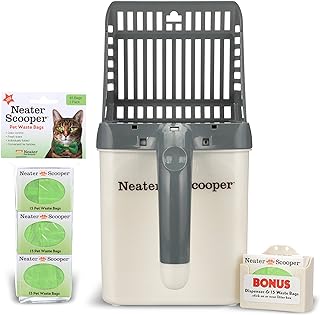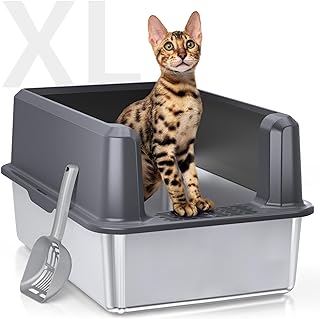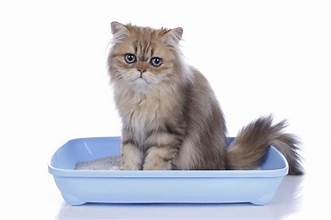As a caring cat owner, your cat’s comfort and happiness are paramount. One key factor that can significantly impact your cat’s well-being and prevent litter box avoidance is the choice of the correct litter box.
Here are some essential considerations to ensure your cat’s comfort:
Size: The size of the litter box is not just a detail; it’s a crucial factor for your cat’s comfort. A good guideline is to choose a box that’s at least 1.5 times your cat’s length, measured from nose to base of the tail. It ensures your cat has ample space to move and turn comfortably inside the box. Remember that kittens grow, so starting with a larger box can save you from needing a new one later.
Accessibility: Your cat’s age plays a significant role in choosing a litter box. For example, kittens and senior cats may struggle with high sides, so a box with a lower entry point could be more suitable. Conversely, kittens may find low sides more accessible. These factors can make a big difference in your cat’s comfort and ease of use.
Covered vs. Open Box: Choosing between a covered or Covered litter box is about your cat’s comfort. Some cats may feel more secure in a covered box, while others might prefer the openness of an uncovered one. If you opt for a covered box, ensuring good ventilation is crucial. It will not only keep your cat comfortable but also help prevent odors.

Number of Boxes: Ensuring the comfort and well-being of your feline friends is paramount. A general recommendation is to have one litter box per cat plus one extra. So, for a two-cat household, you should have three litter boxes around your home, providing them with security and privacy.
Remember, as a responsible cat owner, it’s crucial to choose a litter box that’s easy to clean. Daily scooping is not just a chore but a significant step in maintaining a clean and odor-free litter box. You should thoroughly wash the cat litter box with unscented dish soap weekly. Avoid using litter box liners, as some cats dislike the feel of them.

Material: Plastic litter boxes are the most common and affordable option. Stainless steel boxes are more durable and easier to clean but more expensive. Cardboard boxes can be a temporary option for kittens but should be used only in the short term as they can absorb odors and become flimsy.

Location: Put the litter box in a quiet, easily accessible location away from high-traffic areas and loud noises. Provide good ventilation if using a covered box.
Rest assured, there’s a wide variety of litter types available in the market. Experiment with different options to find your cat’s preference. Clumping clay litter is popular, but other options include paper, wood pellets, and silica gel. You’re sure to find the perfect fit for your feline friend.

Maintenance: Keep the litter box clean! Cats are susceptible to smell and may avoid a dirty box.
With these factors, you can choose a litter box your cat will be comfortable with and use consistently.
Disclosure: This blog contains some affiliate links to Amazon. I might receive a commission if you follow them and purchase anything from the recommended products. I use Amazon for all of my pet products, and I can assure you that I never recommend anything I don’t trust. Thanks for supporting positvelypets.com!




